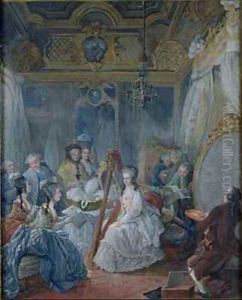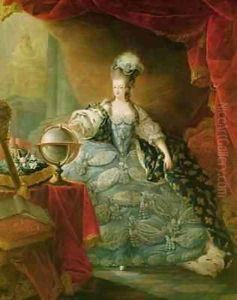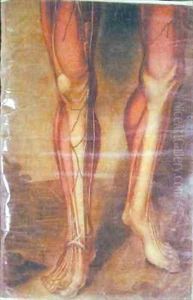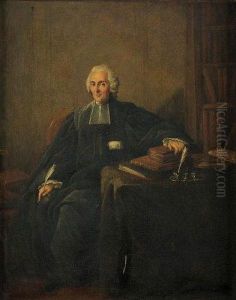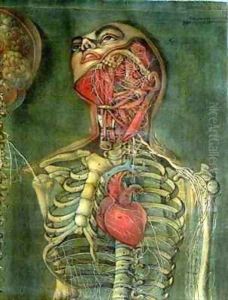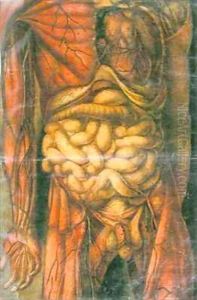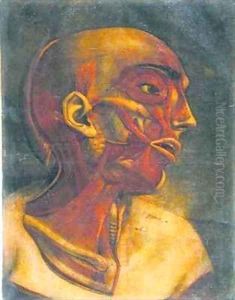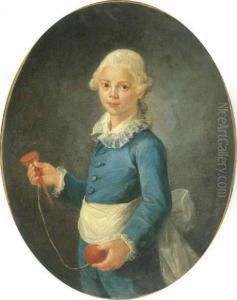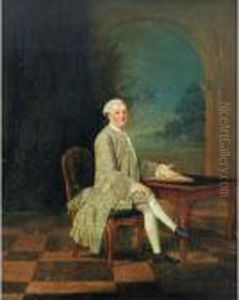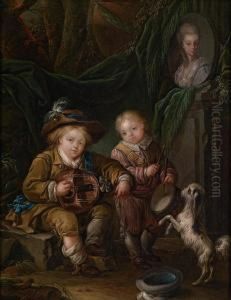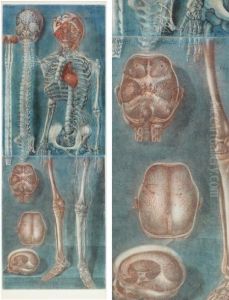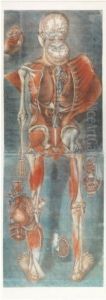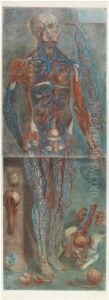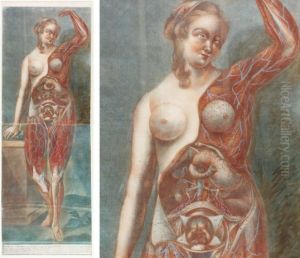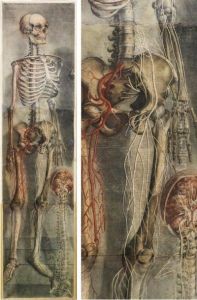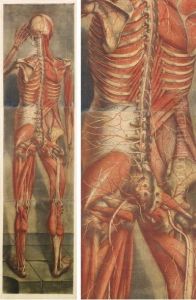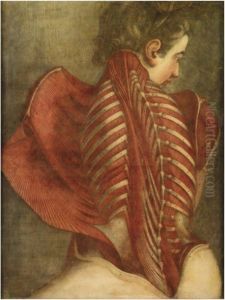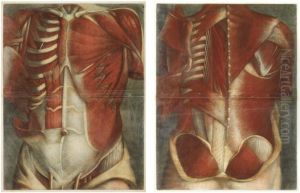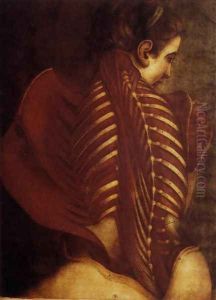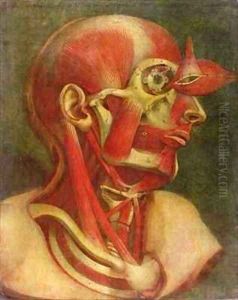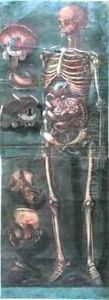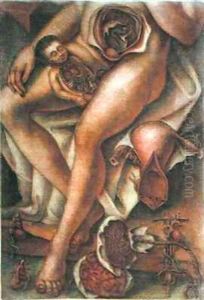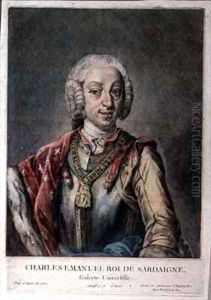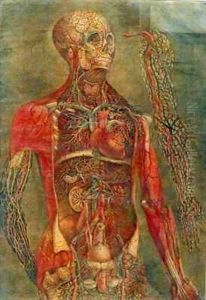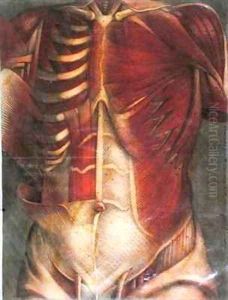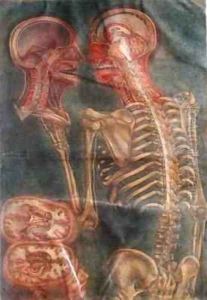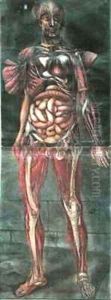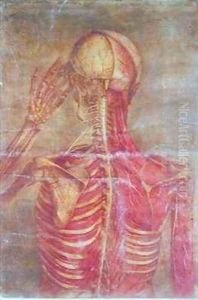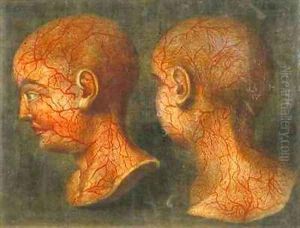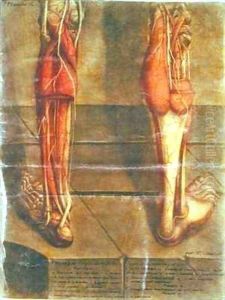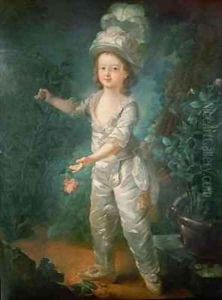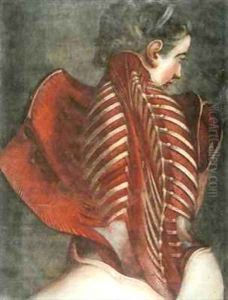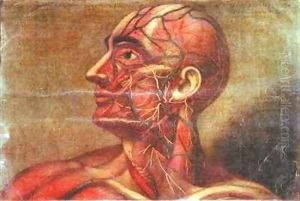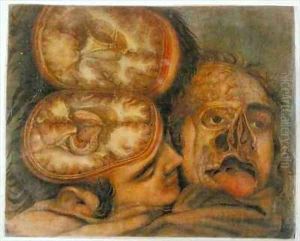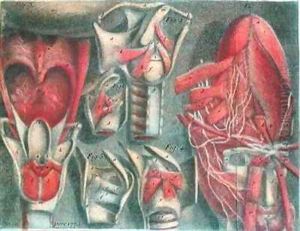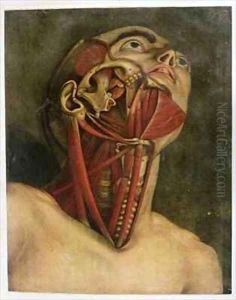Jacques - Fabien Gautier - Dagoty Paintings
Jacques-Fabien Gautier-Dagoty was an 18th-century French artist known for his contributions to the art of color printing. Born in 1716, Gautier-Dagoty came from a background steeped in the arts. He was initially trained by his father, who was a painter and engraver. However, Gautier-Dagoty's significant contributions to the art world were in the realm of color printing, for which he is most recognized.
Gautier-Dagoty's journey into color printing began when he became a pupil of Jacob Christoph Le Blon, the inventor of three- and four-color printing processes. Le Blon had developed a method of printing in color using separate plates for different hues, which was revolutionary at the time. After Le Blon's death, Gautier-Dagoty continued to develop and refine this technique. He extended it to four colors, adding the blue plate to Le Blon's original red, yellow, and black plates.
In 1742, Gautier-Dagoty moved to Paris, where he established himself as a color printer. His work caught the attention of King Louis XV, who provided him with royal patronage. With this support, he was able to produce a series of anatomical prints that were notable for their stunning detail and use of color. These prints were not just scientific tools but also works of art, showcasing Gautier-Dagoty's skill in rendering the human body with both accuracy and aesthetic appeal.
Perhaps Gautier-Dagoty's most famous work is the 'Anatomie des parties de la génération de l'homme et de la femme,' which translates to 'Anatomy of the Generative Organs of Man and Woman.' This publication was groundbreaking in its detailed depiction of human anatomy and was widely used for medical education. These anatomical works were some of the first to show the human body in color, and they had a significant impact on both the art and medical worlds.
Gautier-Dagoty continued to innovate in the field of color printing until his death in 1785. His body of work includes not only anatomical studies but also portraits and other subjects, although it is his contributions to medical illustration that remain his most lasting legacy. Despite his importance, Gautier-Dagoty's name is not as widely recognized as some of his contemporaries. Nonetheless, his advancements in the field of color printing and his influence on medical illustration make him a significant figure in the history of art and science.
